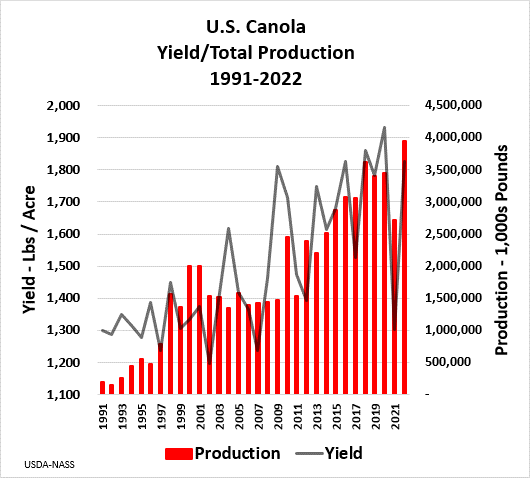 By Tom Hance
By Tom Hance
They took it right up until Christmas Eve, but Congress passed an omnibus appropriations package to fund government programs for fiscal year 2023. The package totals $1.7 trillion with $858 billion in defense funding, including $44.9 billion in emergency assistance to Ukraine and NATO allies, and $772.5 billion for non-defense discretionary programs. For agriculture, the bill includes discretionary funding of $25.48 billion. The Continuing Resolution (CR), which keeps the government operating at FY2022 levels, was set to expire Dec. 23 so the new appropriations package came just in the (saint) nick of time! Following are provisions of interest to the canola sector:
 By Tom Hance
By Tom Hance By Angela Dansby and Dale Thorenson
By Angela Dansby and Dale Thorenson By Jack Brown, Ph.D.
By Jack Brown, Ph.D. By Jim Radtke, Ph.D.
By Jim Radtke, Ph.D. By Brian Jenks, Ph.D.
By Brian Jenks, Ph.D.
 By Anitha Chirumamilla, Ph.D., and Hans Kandel, Ph.D.
By Anitha Chirumamilla, Ph.D., and Hans Kandel, Ph.D.
 By Venkata Chapara, Ph.D.
By Venkata Chapara, Ph.D. By Lesley Kelly, farmer and co-founder of the
By Lesley Kelly, farmer and co-founder of the  Agricultural producers who have not yet enrolled in the Agriculture Risk Coverage (ARC) or Price Loss Coverage (PLC) programs for the 2022 crop year have until March 15, 2022, to sign a contract. The U.S. Department of Agriculture (USDA) offers these two safety net programs to provide vital income support to farmers experiencing substantial declines in crop prices or revenues.
Agricultural producers who have not yet enrolled in the Agriculture Risk Coverage (ARC) or Price Loss Coverage (PLC) programs for the 2022 crop year have until March 15, 2022, to sign a contract. The U.S. Department of Agriculture (USDA) offers these two safety net programs to provide vital income support to farmers experiencing substantial declines in crop prices or revenues.